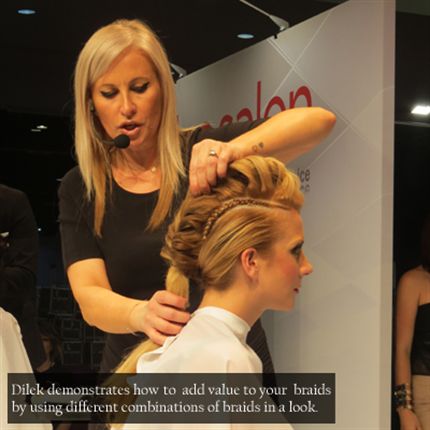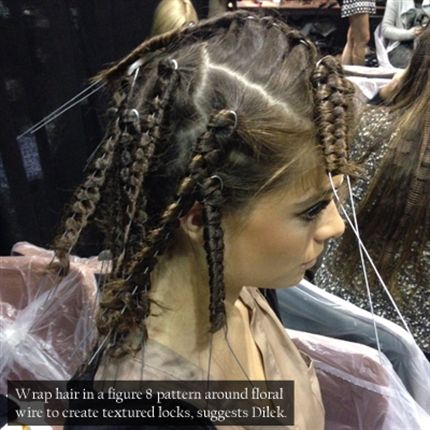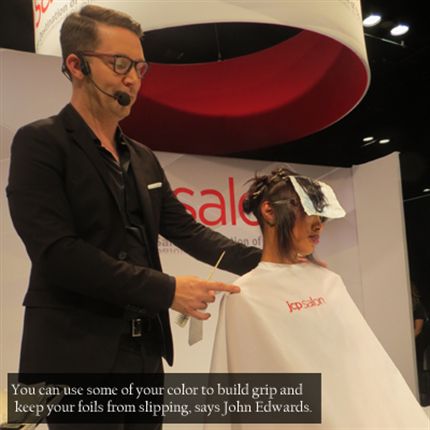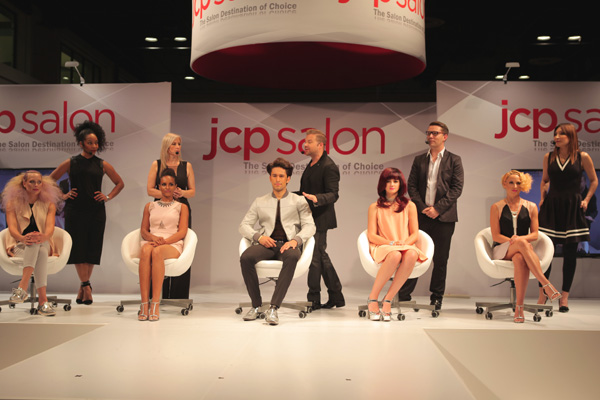10 Things We Learned From The Salon by InStyle inside JCPenney Design Team at Premiere Orlando
When we came across the The Salon by InStyle inside JCPenney (formally jcp salon) stage among the bumping music, maze of booths and more than 50,000 attendees at Premiere Orlando 2015, it was a breath of fresh air. The looks were stunning, the education was actually valuable and the techniques wowed the crowd—there’s a reason they were voted Favorite Chain Salon Group at the 2015 Stylist Choice Awards, after all. From color techniques to business tips, we couldn’t get enough of the Design Team’s amazing education. And even though they were busy rockin’ the jcp stage all weekend long (each team member did about four shows a day!), we managed to sneak in a few minutes to get some exclusive inspiration and advice from one of the most influential teams in the industry. Here’s our “top ten” from the show.
1. “The biggest mistake I see colorists make is that they don’t fill the hair when they color from light to dark. For example, if you have a client who gradually goes lighter—let’s say from a Level 4 to a Level 9—and then decides she wants to be dark again, many colorists will simply throw a color over it, and then they’ll notice it looks muddy, washes out, has no longevity. Immediately they blame the color line, when, in reality, it’s that they need to put the underlying colors (like golds and oranges) back into the hair before they color. It’s like painting a wall. You have to prime it if you don’t want the color to bleed.” – Nick Stenson
2. “In the salon, you want to make sure you’re doing braids your clients can’t do at home. So you could create a design pattern or use the braid as an outline or at the part line, which is big right now. Most people can do big braids, but they can’t necessarily do small braids. Also, use different combinations of braids instead of just one.” – Dilek Onur-Taylor

Get Dilek’s Dual Texture Mohawk Braid How-To Here!
3. “In color, it’s all about the smoky, muted gray tones right now. And I think this trend is going to be around for a while. When I’m creating smoky hues, I like to start with a dominant color and then add a small amount of black to it—just a teeny drop. Then I’ll test this color on a white paper towel and keep adding drops until I get the color I want. For lighter tones, you can add gray or silver instead of black.” – John Edwards
4. “One of my favorite tips for creating upstyles is making sure to texturize the hair first, because you can manipulate textured hair a lot better. Micro-crimping the hair expands the cuticle so the strands are twice as thick, and therefore more moldable. If you don’t have a crimper, just braid the hair and use a flat iron over the top to smooth the cuticle.” – Michelle O’Conner
5. “Texture is huge right now. Everything is very ’90s. My favorite product to create texture is Matrix’s Texture Builder, which I used for my NAHA entry this year. I also like to use floral wire to create texture. Simply wrap the hair around the floral wire in a figure 8 pattern and set. You can leave the ends out if you prefer a straighter look at the ends.” – Dilek Onur-Taylor

6. “One thing I notice about clients is that the hairstyle you give them when they leave the salon is the only way they think they should wear it. So you need to show them there are other ways to style the haircut—show them the versatility and the range of the cut. It’s up to the stylist to educate the client on the products to use, how to recreate the look, etc.” – Nick Stenson
7. “When creating a women’s undercut, the key is to figure out how much she wants to show off when she tucks it behind her ear. For this particular cut, for example, I created a really strong line along the parietal ridge, then I dropped down right below the occipital and worked all the way around. The idea is to go high enough on the side at the parietal ridge so that when her hair is tucked, you see that shave line. Haircuts like this are all about the element of surprise.” – Nick Stenson

8. “To create movement within a cut, it’s all about interior layering. Haircuts are divided between two sections—active and inactive. Active is the hair on top that moves. Inactive is the hair underneath that doesn’t move. A lot of hairdressers only cut the hair on top, forgetting about the underneath section. To bring life to that hair underneath, work from underneath and on top, which will bring instant volume and height to the midsection.” – Nick Stenson
9. “While coloring, if your foils start to slip, place more product on the foil, and place another foil on top to create a seal. This will build grip and keep the foils from slipping.” – John Edwards

10. “The biggest color mistake I see? A lot of it has to do with formulation. Many times, stylists will depend on the box to work for them. We need to realize that just because we put a 6M on [the hair] doesn’t mean it’s going to be a true 6M. There are so many other factors you need to take into account…The same color will look totally different on two different people because of skin tones, underlying pigment, etc. It’s a continuous process of practice to figure out [what looks best].” – John Edwards





